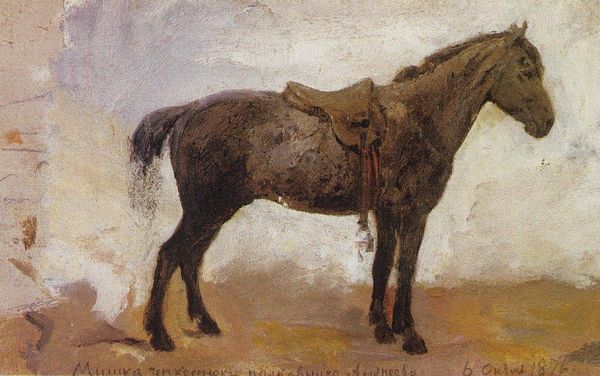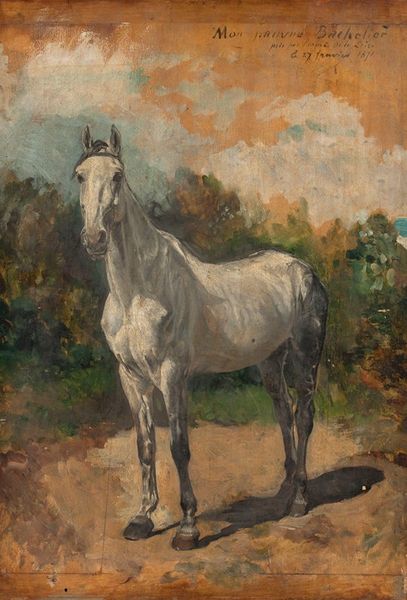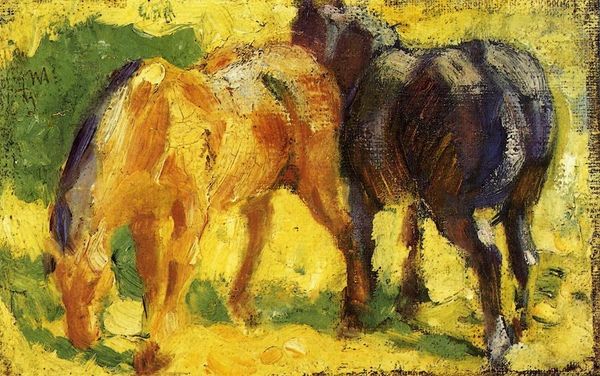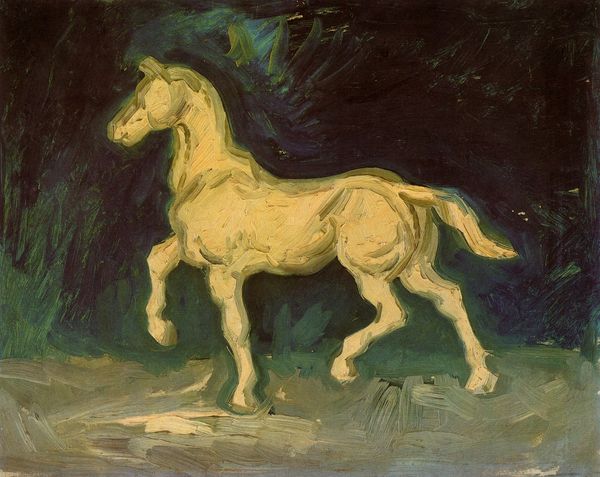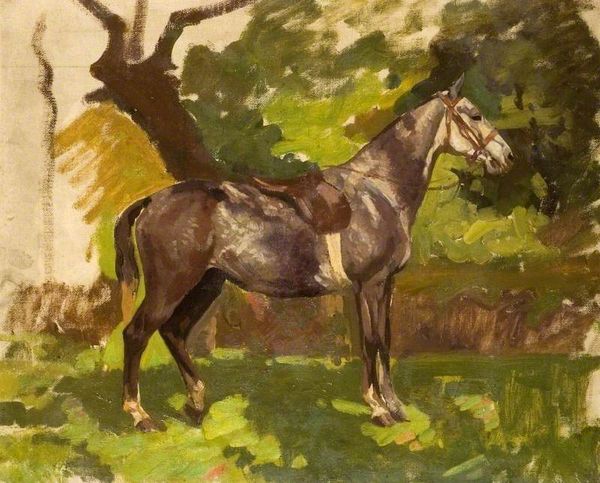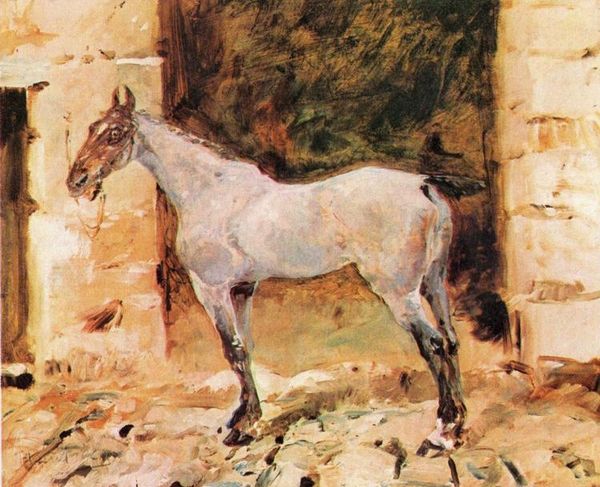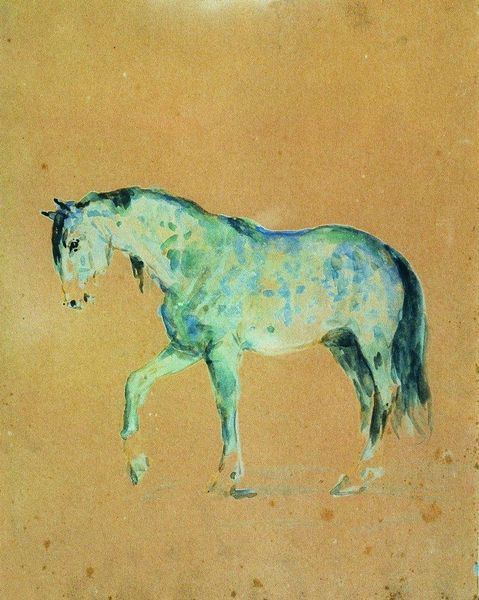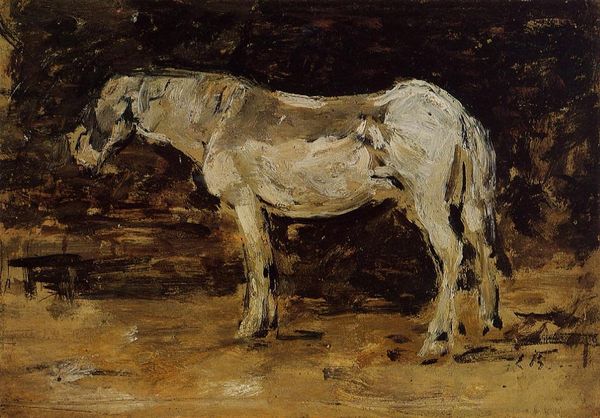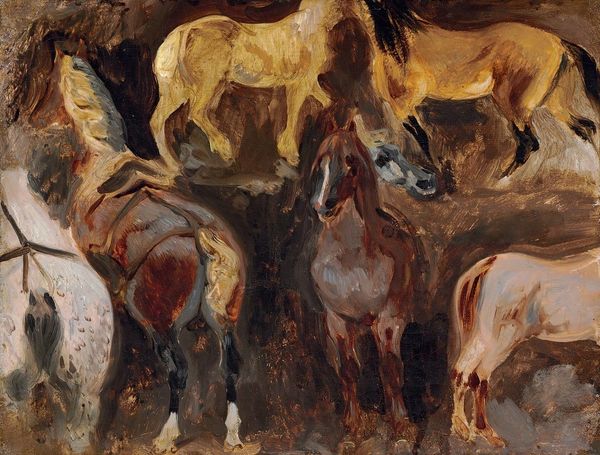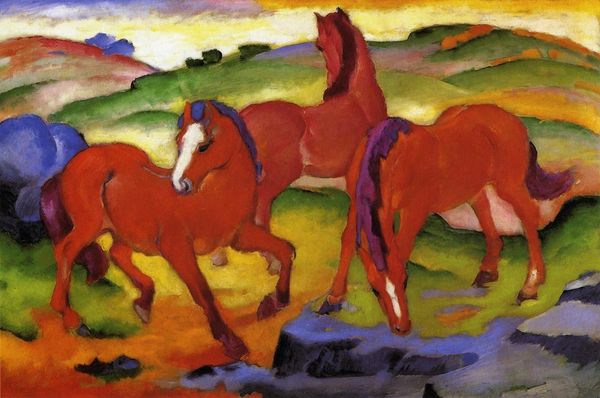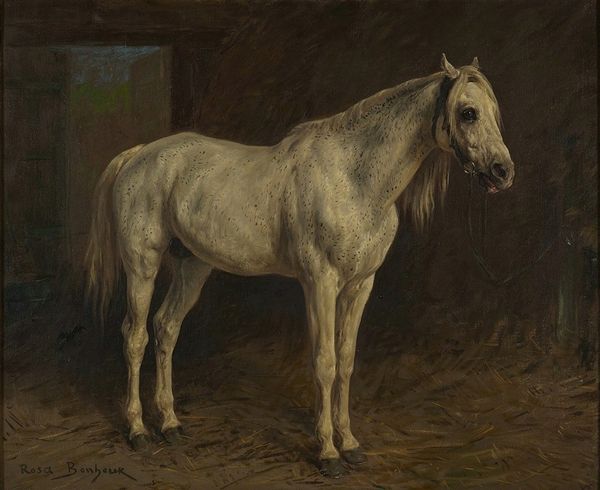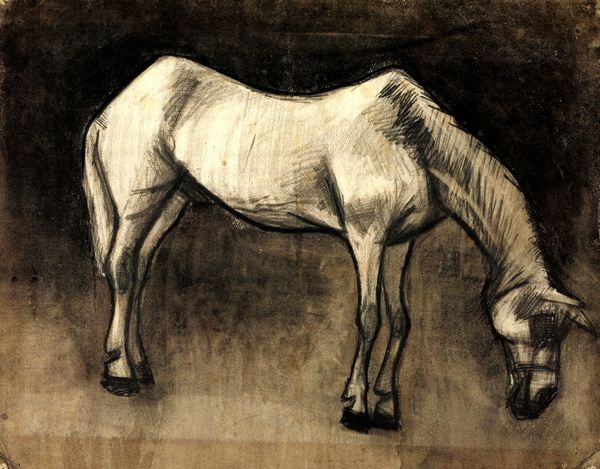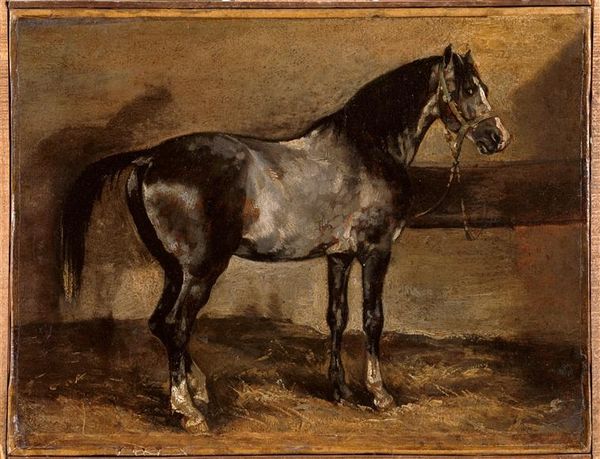
painting, oil-paint
#
portrait
#
animal
#
painting
#
oil-paint
#
figuration
#
oil painting
#
animal portrait
#
naturalistic tone
#
horse
#
genre-painting
#
expressionist
#
erotic-art
#
realism
Dimensions: 26.6 x 19 cm
Copyright: Lucian Freud,Fair Use
Editor: Here we have Lucian Freud’s 1970 painting, “A Filly,” rendered in oil. The palette feels so confined, almost claustrophobic. How might we interpret this work? Curator: This portrait provides a glimpse into the relationship between humans and animals within a specific social structure. How might we read this “Filly” beyond a simple depiction? Editor: I guess I hadn’t considered that, it seemed quite intimate and vulnerable to me at first glance. Curator: Exactly. By the 1970s, the visual representation of animals had shifted. Once symbols of wealth and power displayed within aristocratic circles, they became a tool to understand broader themes. Why do you think Freud, a prominent figure painter, turned his attention here? Editor: Maybe because animals had been newly defined as beings worthy of respect, as fellow living creatures, particularly within genre painting? Was there a wider cultural interest to elevate their representation in art? Curator: Precisely! The focus then shifts. Consider how the gaze in the picture might shape that connection between subject, artist, and audience, and reflect a growing social consciousness, regarding the relationship between animal and the public's ethics. Editor: So, its naturalistic style perhaps isn’t simply capturing visual likeness but reflecting changing attitudes within society. Thanks; I will keep in mind such a historic, complex social relationship next time. Curator: Indeed; I've learned as well how deeply entwined art becomes within societal changes.
Comments
No comments
Be the first to comment and join the conversation on the ultimate creative platform.
